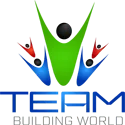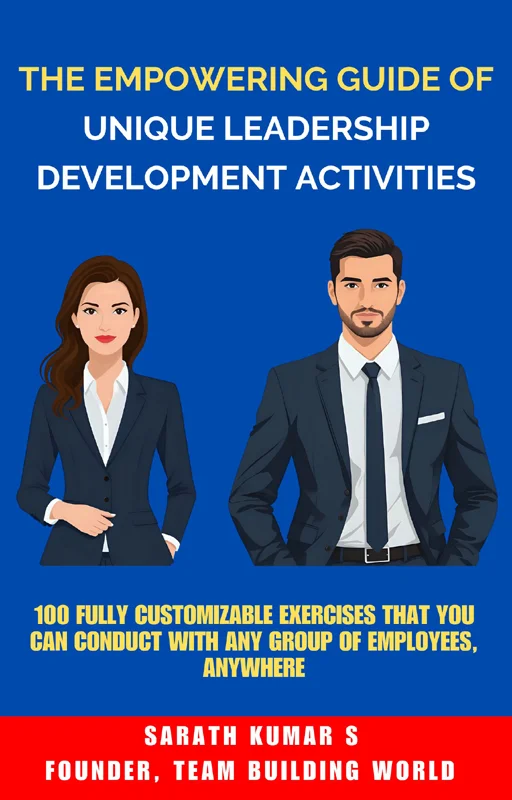10 Growth Mindset Team Building Activities for Leadership
Are you in search of some growth mindset team building activities?
In today’s fast-paced and ever-changing business world, promoting a growth mindset among your employees is essential for success. This mindset promotes a willingness to take on challenges, embrace feedback, and learn from failures.
In this article, let’s see 10 growth mindset activities for your workplace. By incorporating them into your leadership training sessions, you can create a culture of continuous learning, collaboration, and adaptability.
10 Growth Mindset Team Building Activities for Leadership
Here are some team building exercises that will help develop a growth mindset in your employees.
If you want some activities on leadership styles, you can read this article: 11 Leadership Styles Activities & Games (With Debrief)
So, let’s go!
#1. Success Mapping
This activity helps employees develop a growth mindset by visually mapping out their goals and creating a supportive environment for achieving them.
Time: 10-15 minutes
Materials: Paper, and markers
Participants: Any number of people in a group
Instructions
- Ask each employee to create a visual representation of their personal and professional goals. For this, they can use paper and markers.
- After everyone has created their maps, have each person share them with the group.
- Encourage the group to offer support and suggest the steps needed to achieve each goal.
Debrief
Discuss how visualizing goals can help in developing a growth mindset and create a culture of encouragement and support. Highlight the importance of setting achievable goals and seeking help from others to reach them.
You can also read: 10 Team Building Activities for Your Supervisors
#2. Constructive Feedback Circle
This activity aims to cultivate a culture of positive communication, where employees can openly give and receive feedback in a safe and supportive environment.
Time: 10-20 minutes
Materials: None
Participants: Any number of people per group
Instructions
- Arrange team members in a circle to foster a sense of equality and openness.
- One by one, each person gives and receives feedback, focusing on behaviors rather than personal traits. Example: Instead of “You’re not good at time management,” say “I noticed you’ve been missing a few deadlines. Maybe we could look at prioritizing your tasks together?”
- Encourage the sharing of actionable advice that helps promote growth, such as using specific examples to illustrate points.
Debrief
Discuss the importance of constructive feedback in a supportive and respectful manner. Highlight the value of providing actionable advice instead of criticism to help individuals improve and achieve their goals.
You can also read: 12 Leadership Teamwork Activities for the Workplace
#3. Failure Celebration
Embrace setbacks as stepping stones with the ‘Failure Celebration’, an activity designed to reframe failure as a growth catalyst.
Time: 10-15 minutes
Materials: Sticky notes, and markers
Participants: 4-10 people per group
Instructions
- Invite participants to write a brief description of a recent failure on a sticky note.
- Have each person share their experience, focusing on the positive outcomes and what lessons were learned. Example: “I missed a project deadline, which taught me to communicate roadblocks early.”
- Encourage discussion on how challenges can lead to professional development and innovation.
Debrief
Unpack the collective insights gained from failures and identify patterns in setbacks that can inform future strategies. Determine actionable steps to apply these lessons and create a supportive environment that sees failure as a form of valuable feedback.
You can also read: 10 Continuous Improvement Team Building Activities
#4. Reflective Journaling Initiative
Cultivate insight and self-awareness in employees through the act of daily reflective journaling, which takes just 10 minutes a day.
Time: 10 minutes daily
Materials: Journals or notepads and pens
Participants: Groups of any size
Instructions
- Set aside time each day for team members to jot down thoughts on their daily experiences, focusing on insights gained and knowledge acquired.
- Use prompts such as, “What is one lesson today taught me?” to guide reflections.
- During weekly team meetings, encourage employees to share their reflections. For example, “Today I learned the importance of time-blocking for task management.”
Debrief
During debriefs, analyze recurring themes in journal entries to identify areas of collective strength and opportunities for skill development. Use these insights to tailor future team training and support individual growth trajectories.
#5. “I Can” Statements
This exercise promotes a growth mindset and builds confidence within the team, while also fostering collaboration and goal-setting.
Time: 15-20 minutes
Materials: Paper and pen
Participants: Any number of people per group
Instructions
- Have each person write down three personal affirmations of their capabilities, starting with “I can.”
- Encourage bold and achievable objectives that align with their roles and aspirations. Example: “I can become a more effective communicator by practicing active listening.”
- After some time, ask everyone to share their statements with the group. Facilitate a conversation on strategies that can help achieve these goals.
- End the session by having everyone repeat their “I can” statement out loud, solidifying their commitment to achieving it.
Debrief
Review the shared “I can” statements and the collective support strategies discussed. Highlight the potential for individual commitment to translate into team progress.
#6. Strategic Solutions Sprint
This is a strategic session designed to assist leaders in establishing clear and actionable objectives within a designated timeframe.
Time: 15-30 minutes
Materials: None
Participants: Leaders and team members who have the authority to set goals
Instructions
- Commence with an introduction to SMART goals—specific, measurable, achievable, relevant, and time-bound—to set a foundation for effective goal-setting.
- Facilitate a discussion to identify the most pressing challenges or opportunities within the organization. Then, break the participants into smaller groups.
- Assign each group a specific challenge or opportunity to tackle within the next quarter.
- Conclude with a commitment pledge where leaders publicly commit to their goals, fostering accountability.
Debrief
In the debrief, focus on evaluating the realism and ambition of the set goals. It’s crucial to ensure that these objectives align with broader company targets and leadership development plans.
#7. Peer Coaching Pairs
This peer-to-peer activity enhances team collaboration, offering valuable insights from varied perspectives.
Time: You decide
Materials: None
Participants: Pairs
Instructions
- Divide participants into pairs and assign roles of coach and learner.
- The coach will guide the learner in reflecting on their goals and offering feedback and support. For example, asking questions like “How will this goal contribute to the team’s overall efficiency?” or providing resources to help achieve the goal.
- After a set time, have participants switch roles and repeat the exercise.
Debrief
In the debrief, encourage employees to share what they learned from their peers and how it can help them achieve their own goals. Emphasize the value of collaboration and learning from others.
#8. The “Yet” Power Phrase
This quick, empowering activity helps to build a growth mindset by transforming self-limiting beliefs into future possibilities.
Time: 10 minutes
Materials: None
Participants: Groups of any size
Instructions
- Instruct participants to consider a personal limitation or a skill they have not mastered.
- Have them rephrase their thought, incorporating the word “yet” to transform it into a statement of potential (e.g., “I’m not good at public speaking” becomes “I’m not good at public speaking… yet”).
- Encourage team members to share their transformed statements with the group.
- Promote the idea that personal and professional growth takes time and persistence.
Debrief
During the debrief, assess the shift in mindset and identify how the power of “yet” can turn challenges into opportunities for growth. Encourage team members to continue using this power phrase in their daily thoughts and discussions to cultivate a growth-oriented mindset.
#9. Barrier Breakthrough
This is one of the interesting growth mindset team building activities. Here employees engage in a solution-driven session to creatively tackle common challenges.
Time: You decide
Materials: Whiteboard and markers
Participants: 3-8 individuals in a group
Instructions
- Start by listing typical barriers the team encounters on a whiteboard.
- Break the participants into small groups, assigning each a barrier to focus on.
- Direct groups to brainstorm innovative strategies to surmount their assigned barrier, encouraging inventive and practical solutions.
- Reconvene to share and discuss each group’s breakthrough ideas.
Debrief
Reflect on the creative brainstorming process and the potential for breakthrough solutions when approaching challenges with an open mind. Encourage employees to continue challenging themselves to think outside the box when facing obstacles.
#10. Feedback Implementation Challenge
Challenge your team to solicit targeted feedback, actively apply it, and share their growth experiences.
Time: You decide
Materials: Index cards, and pens
Participants: 3-6 individuals per group
Instructions
- Request that each member identify an area for personal growth and ask for feedback from their group specifically on this aspect.
- Direct each group member to note the feedback received on their index cards.
- Instruct individuals to actively apply one piece of feedback they received over the next week.
- After a week, gather together and discuss how this implementation challenge impacted each member’s growth journey.
Debrief
Reflect on the power of targeted feedback and actively seeking growth opportunities. Encourage ongoing support within the team to continuously improve and reach goals.
Want Some Unique Team Building Activities?
If you want some unique activities for your employees (both in-person and virtual), you can get my new e-book:
Or Want Some Unique Leadership Development Activities?
If you want some unique activities (both in-person and virtual) to make your employees including managers better leaders, you can get my new e-book:
Final Words
In conclusion, these team building challenges are designed not just to strengthen bonds but also to shatter barriers to personal growth. By embracing targeted feedback, adopting a “no limit” mindset, and genuinely supporting one another, you can cultivate a culture of continuous improvement and collective success. Keep these practices in mind and watch your team thrive!

